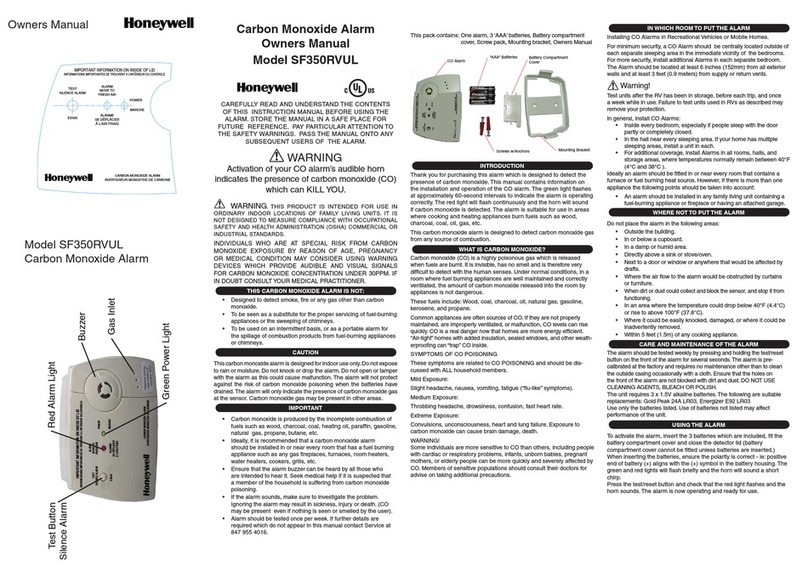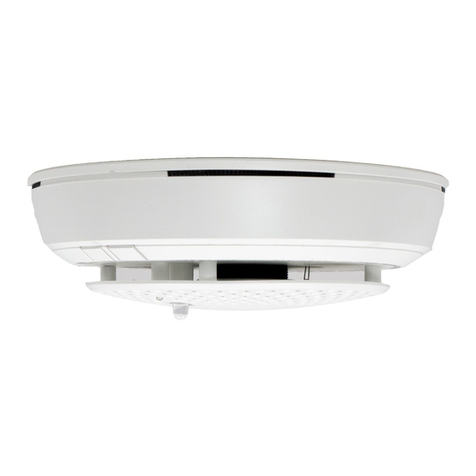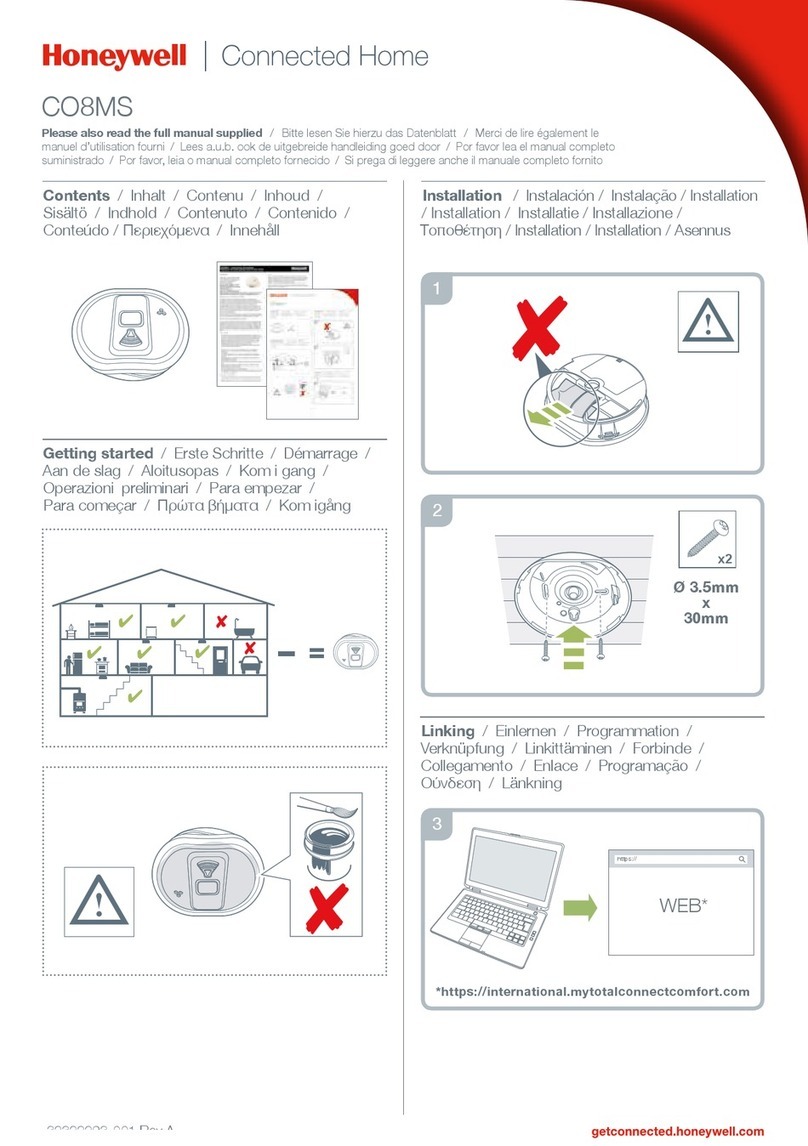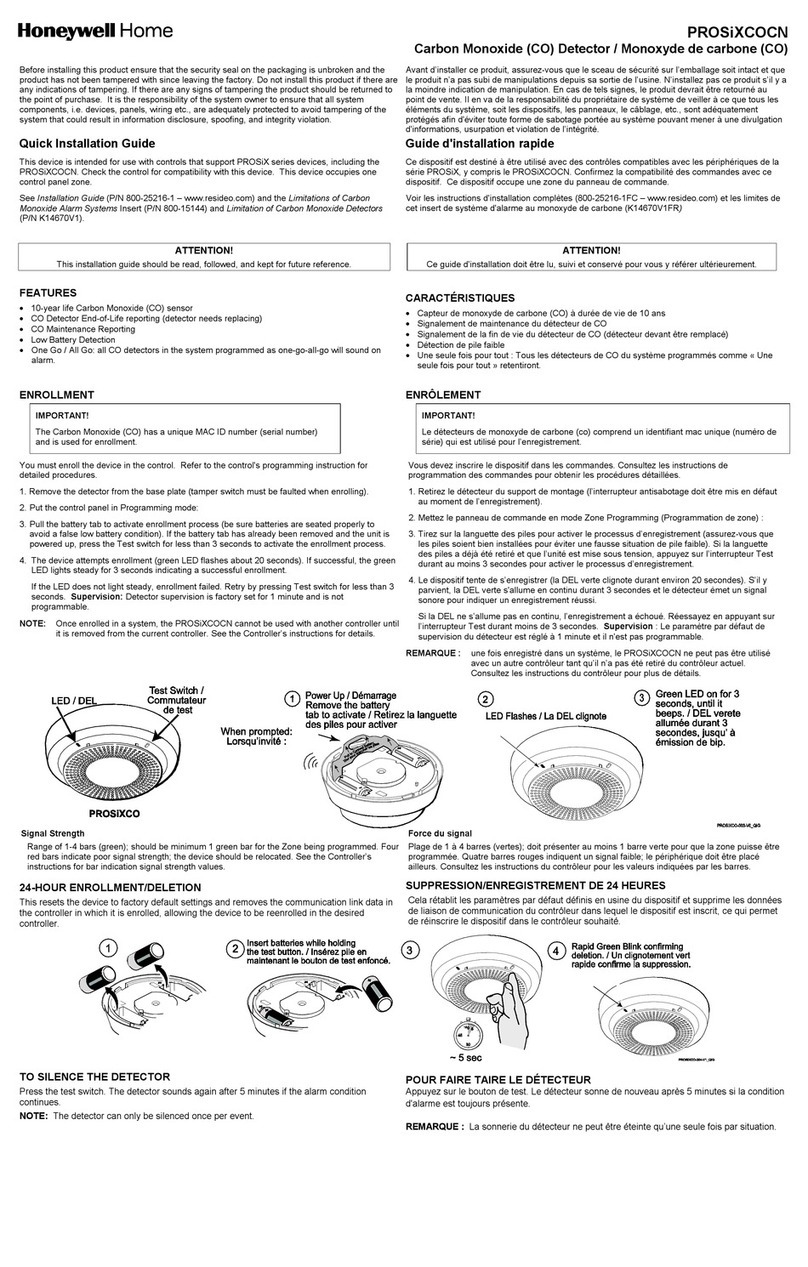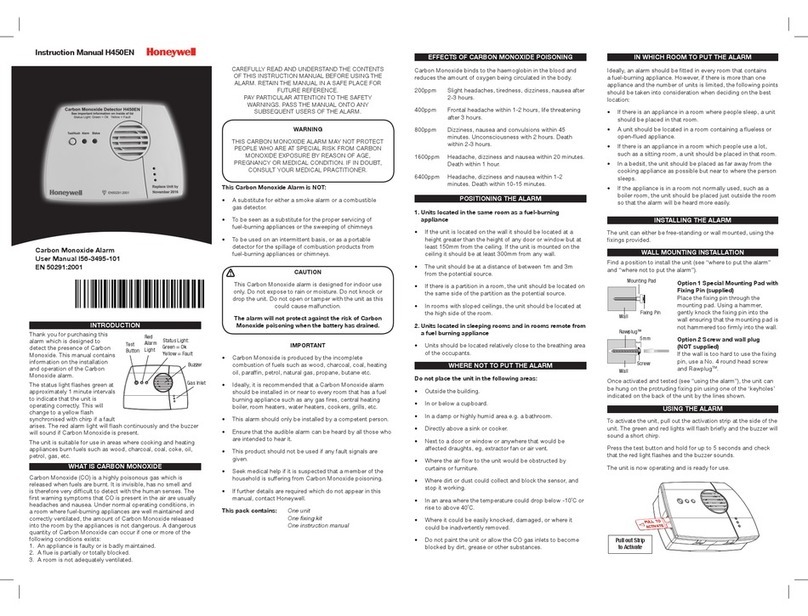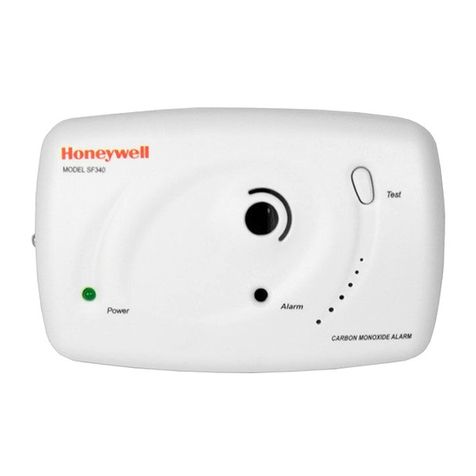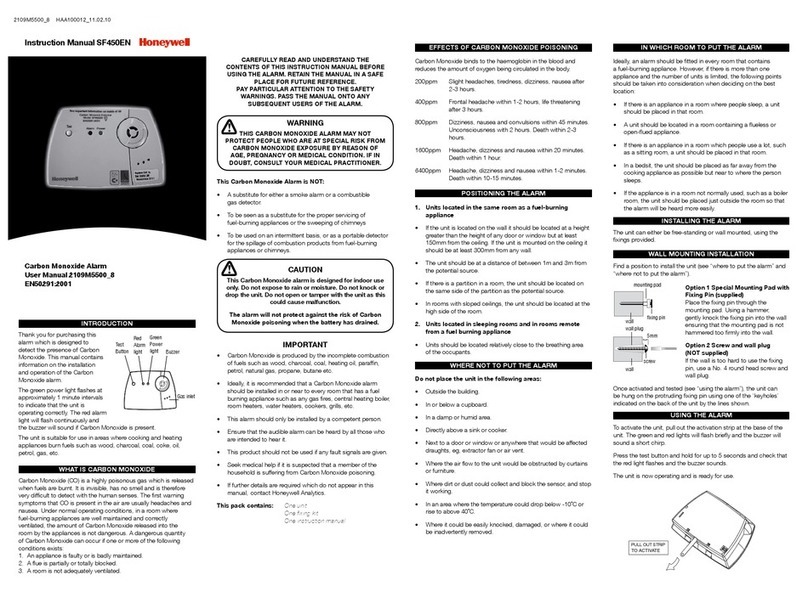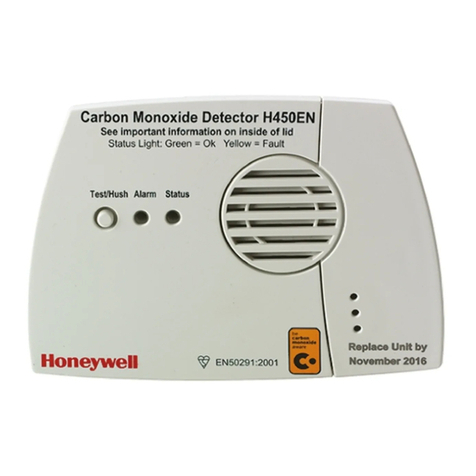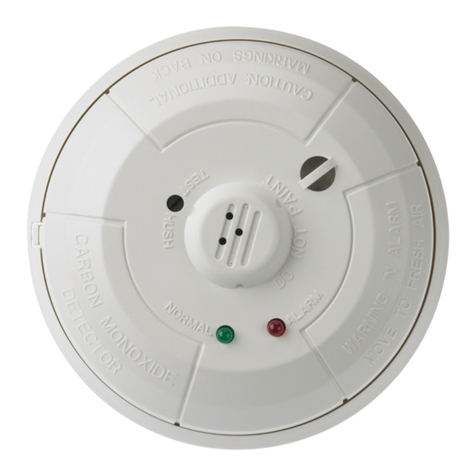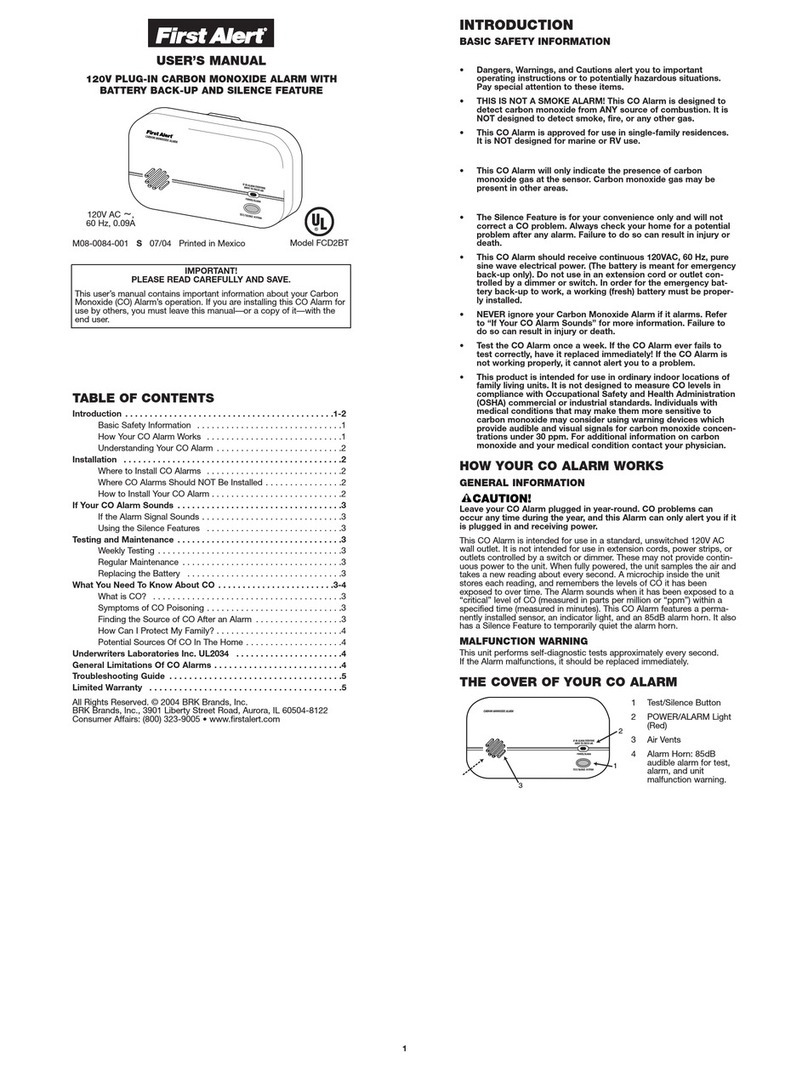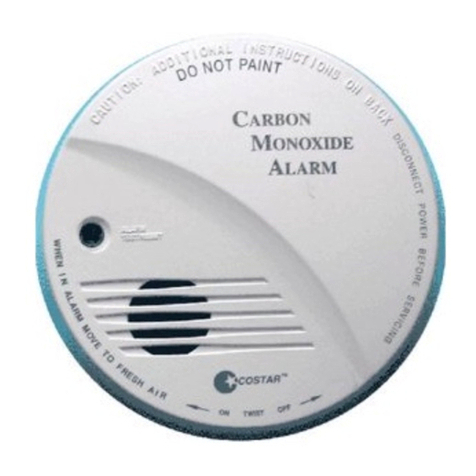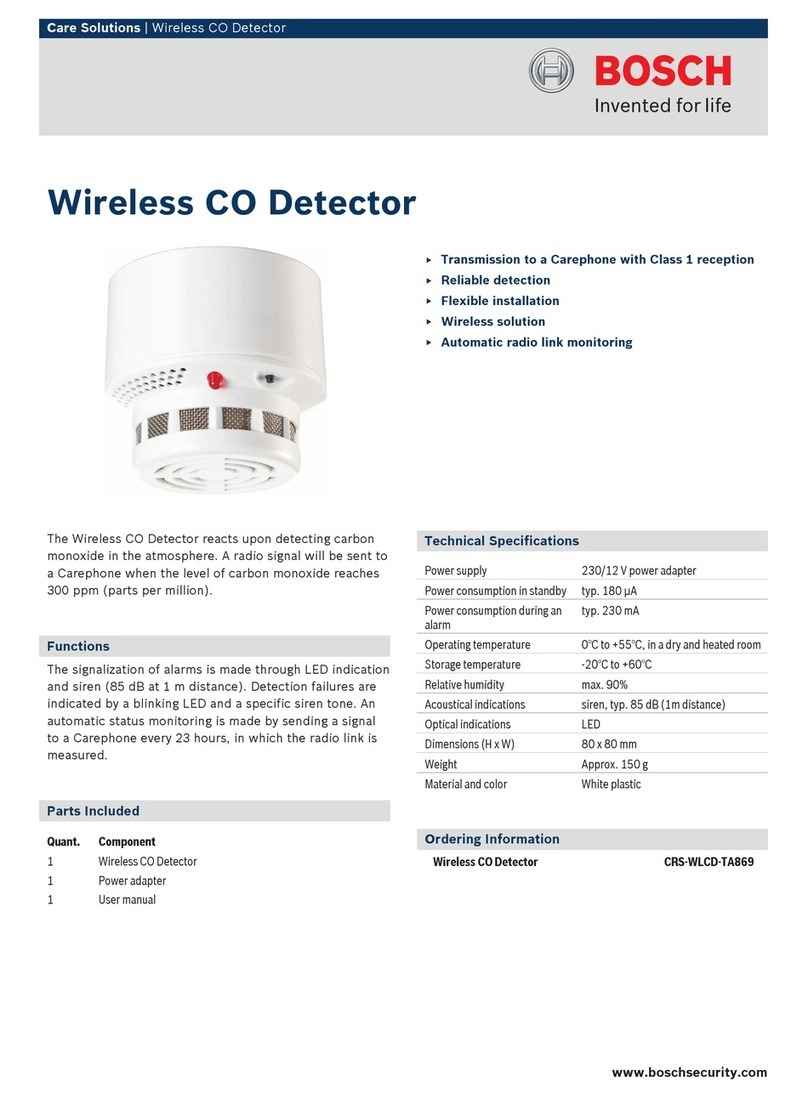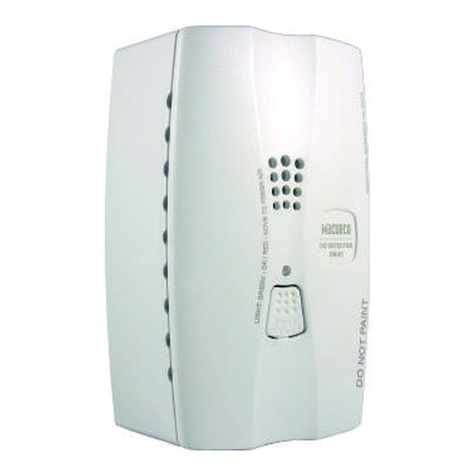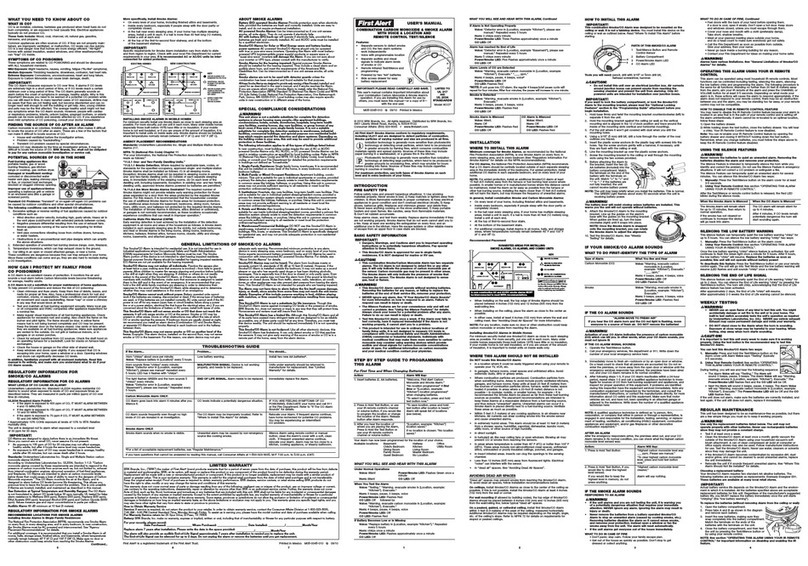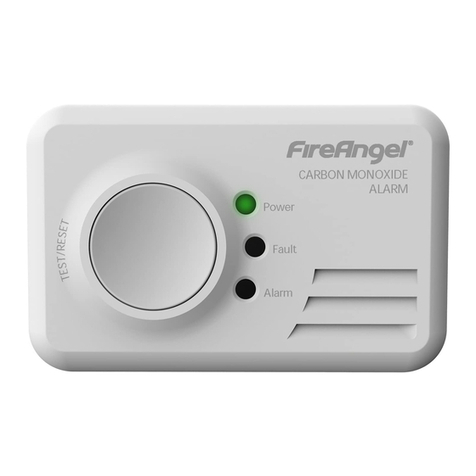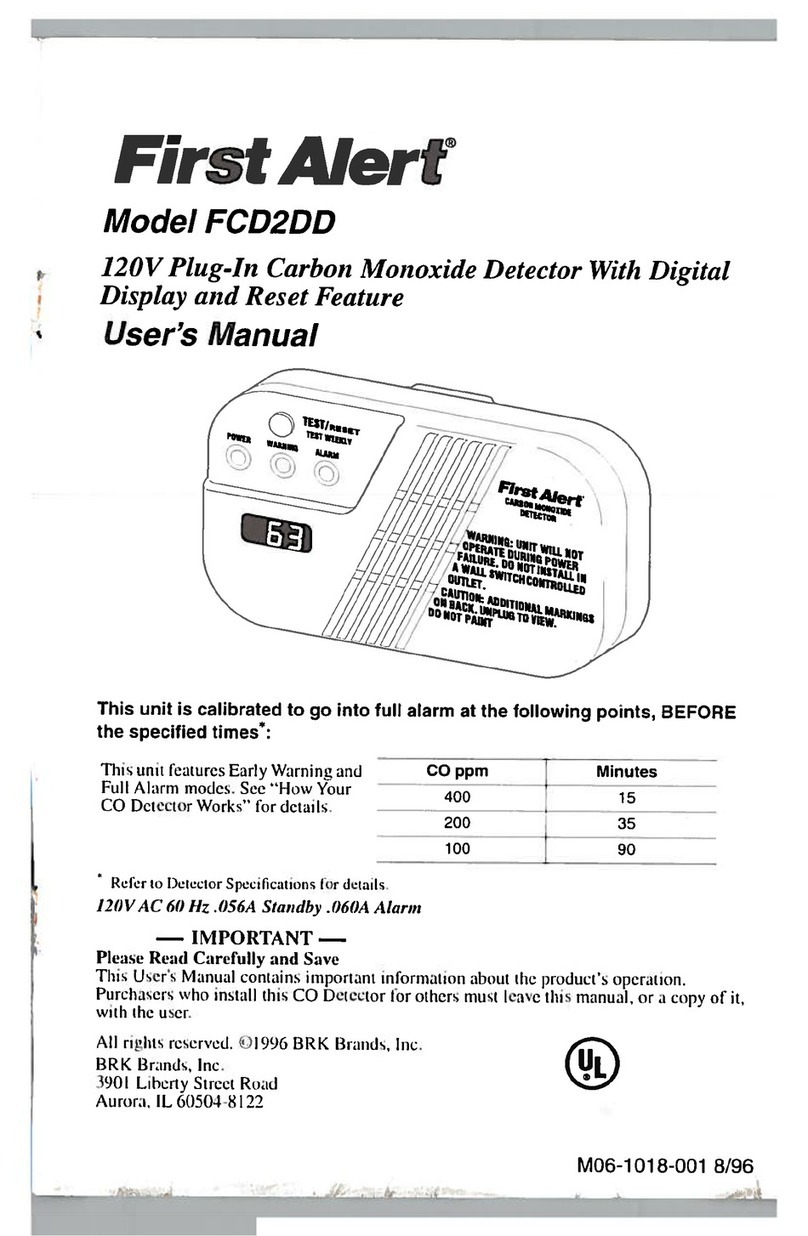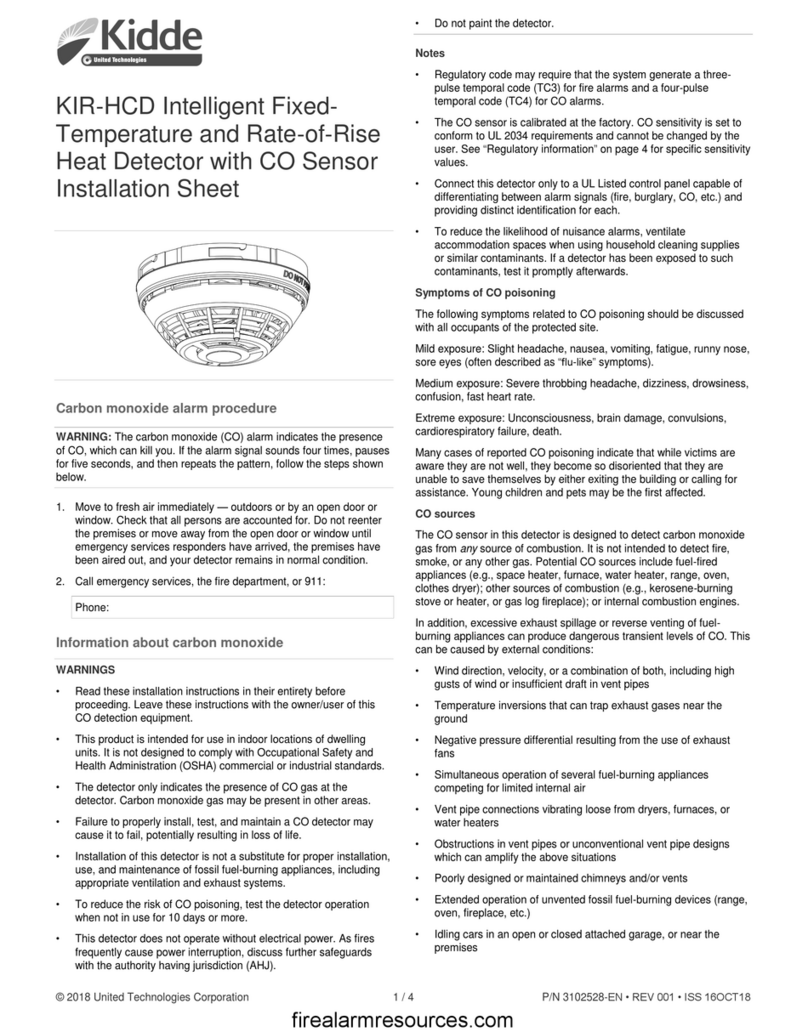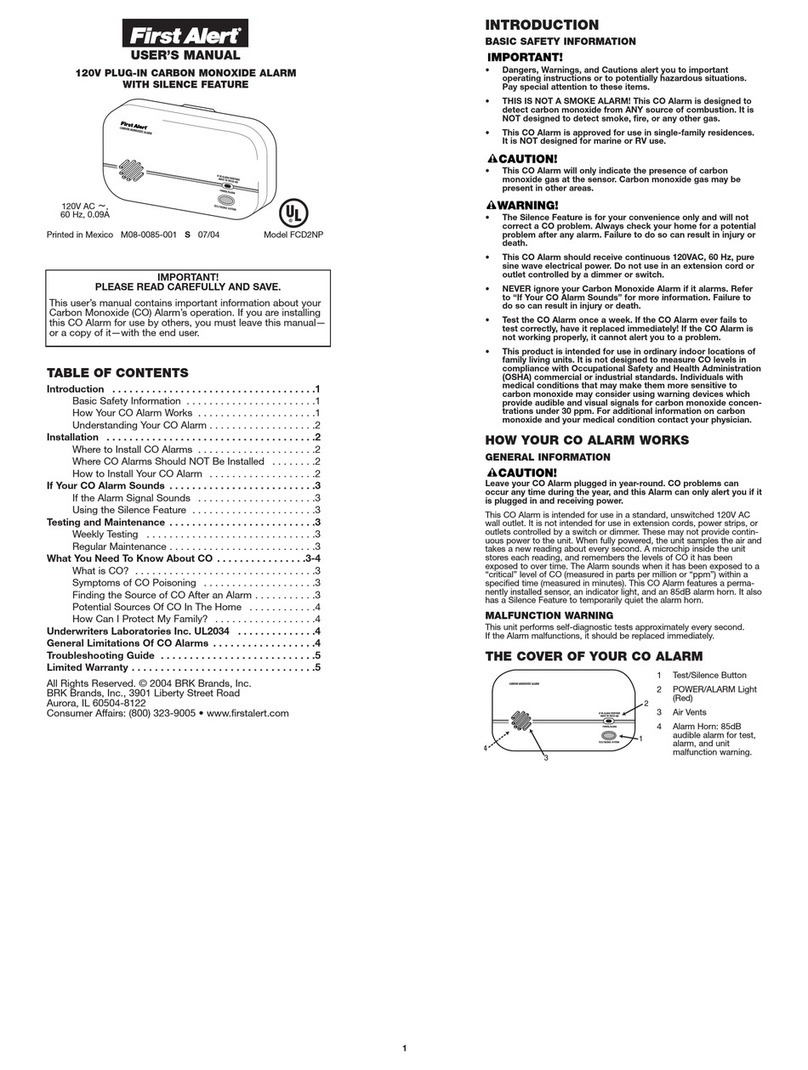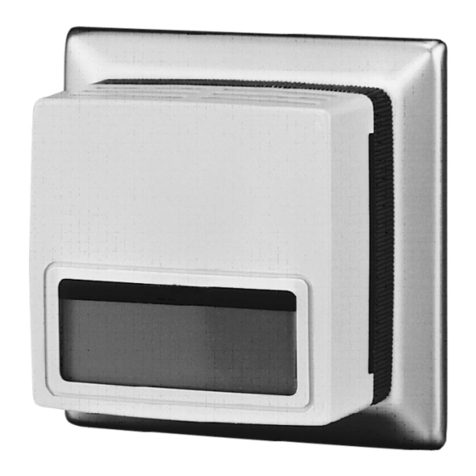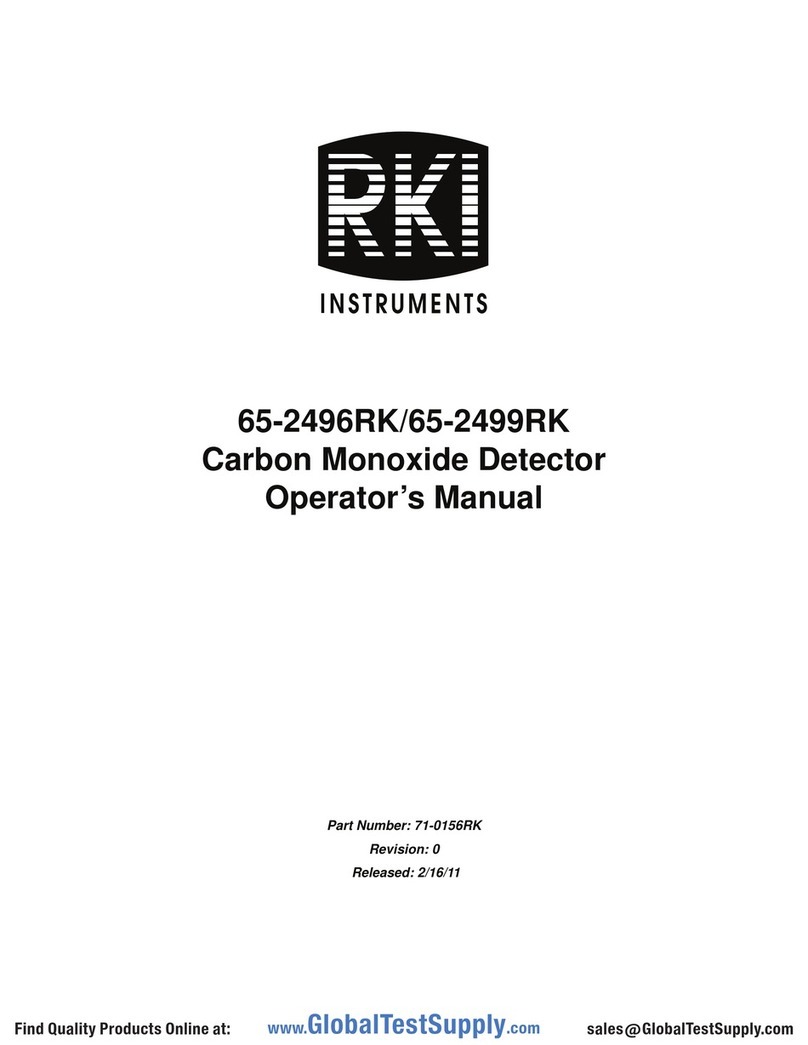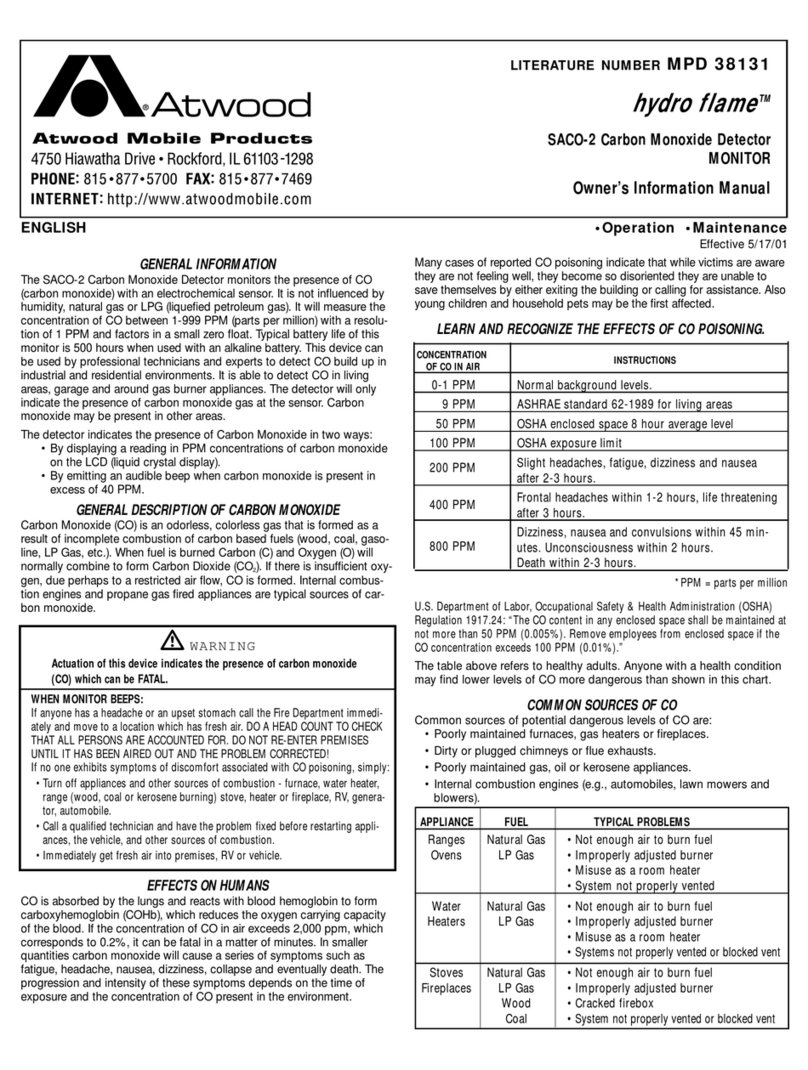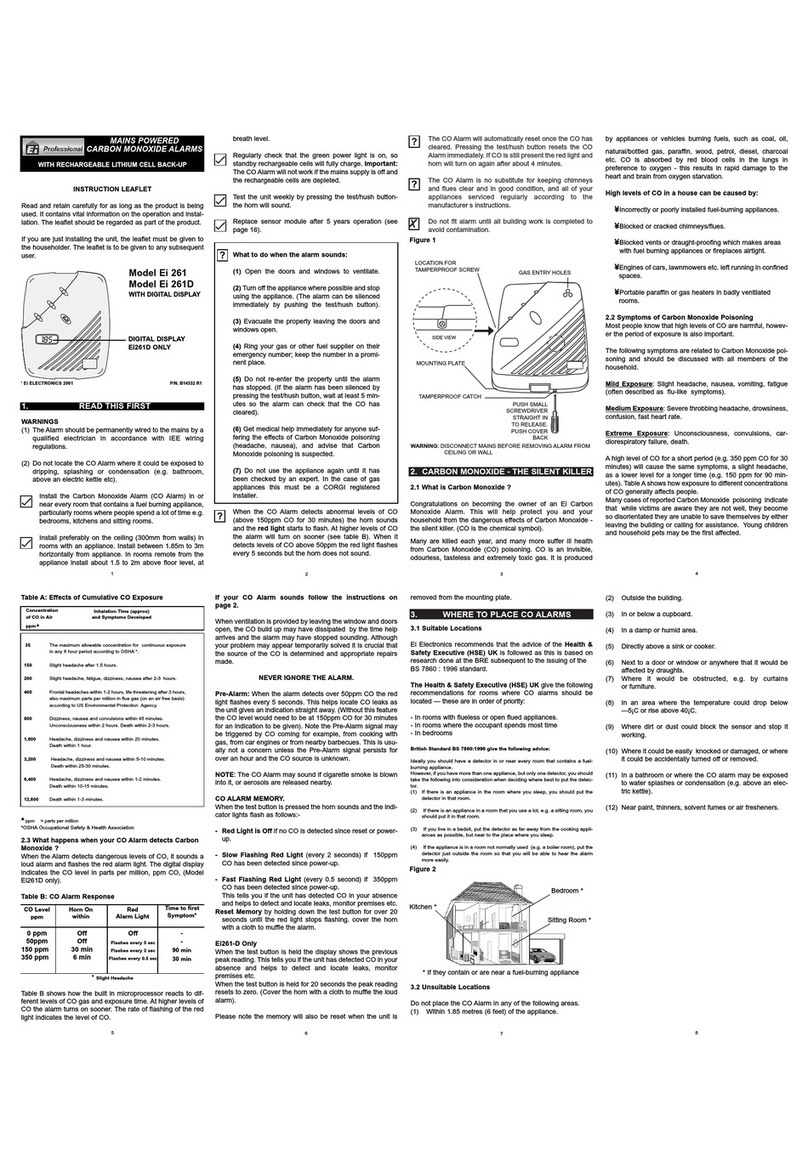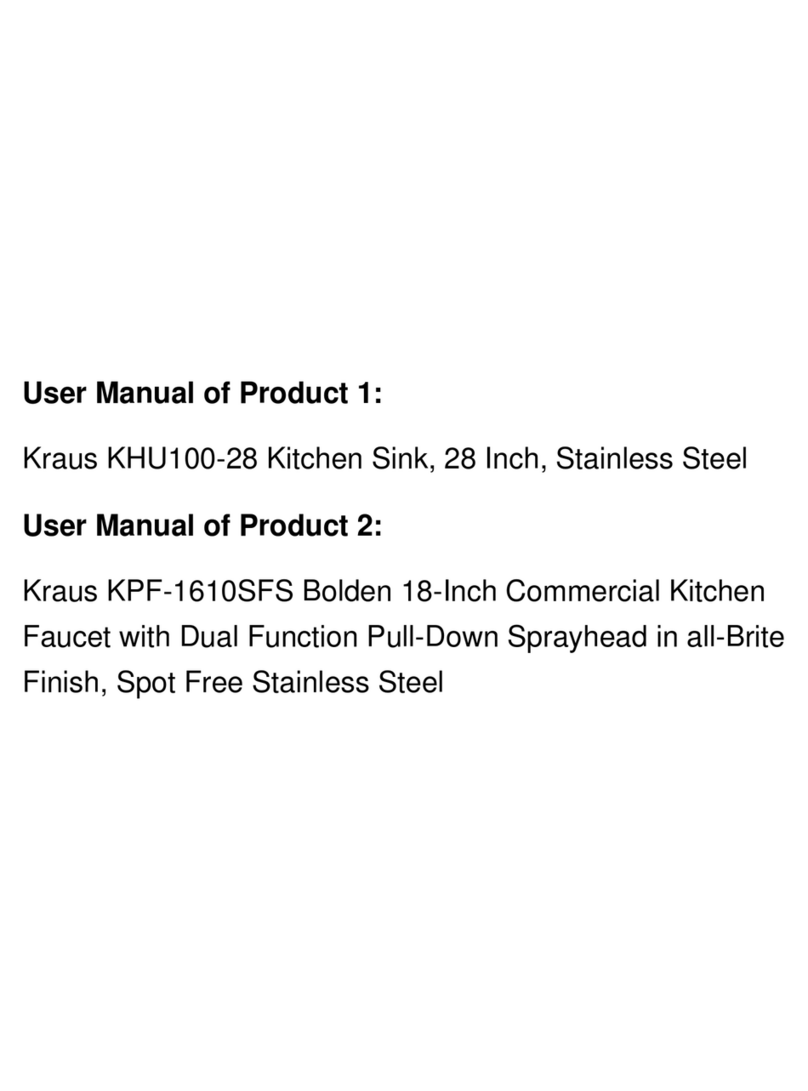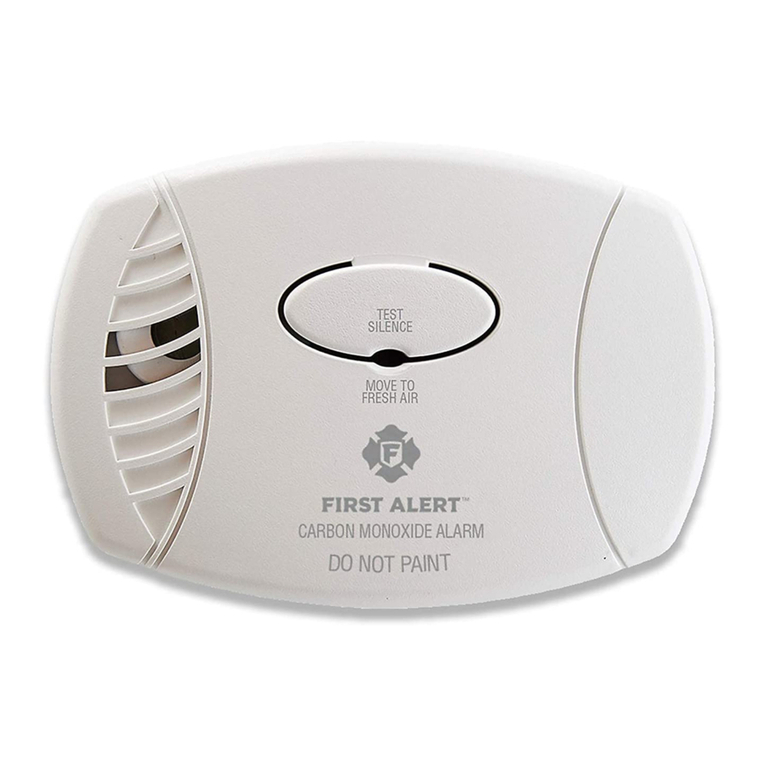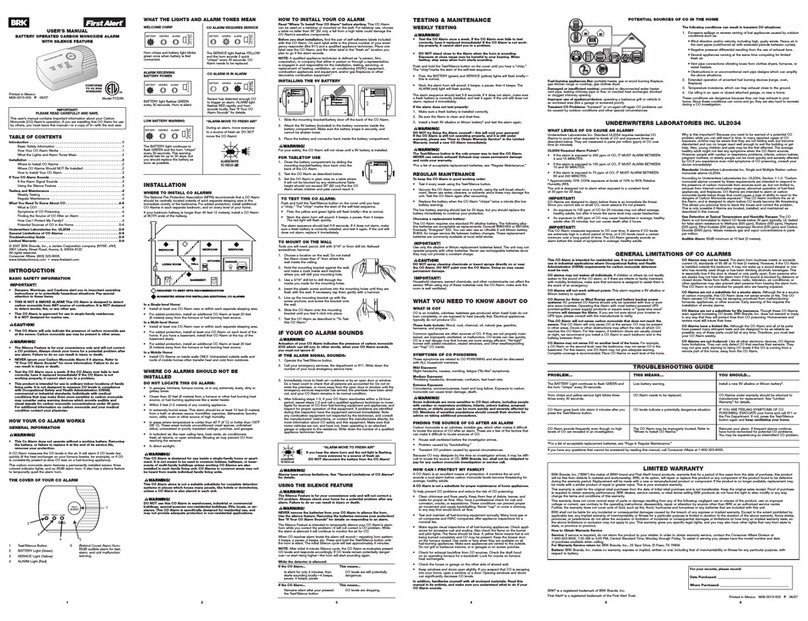
CAUTION: Carbon Monoxide Gas and its Detection
This carbon monoxide alarm is designed for indoor se only. Do not
expose to rain or moist re. Do not knock or drop the alarm. Do not
open or tamper with the alarm as this co ld ca se malf nction. The
5800COA will not protect against the risk of carbon monoxide
poisoning if not properly installed. It will only indicate the presence of
carbon monoxide gas at the sensor.
Carbon monoxide gas may be present in other areas.
This carbon monoxide alarm is NOT:
• Designed to detect smoke, fire or any gas other than carbon
monoxide
• To be seen as a s bstit te for the proper servicing of f el-b rning
appliances or the sweeping of chimneys.
• To be sed on an intermittent basis, or as a portable alarm for the
spillage of comb stion prod cts from f el-b rning appliances or
chimneys.
Carbon monoxide gas is a highly poisono s gas which is released
when f els are b rned. It is invisible, has no smell and is therefore
impossible to detect with the h man senses. Under normal conditions
in a room where f el b rning appliances are well maintained and
correctly ventilated, the amo nt of carbon monoxide released into the
room by appliances sho ld not be dangero s.
Symptoms of carbon monoxide poisoning: Carbon monoxide
bonds to the hemoglobin in the blood and red ces the amo nt of
oxygen being circ lated in the body. The following symptoms are
related to carbon monoxide poisoning and sho ld be disc ssed with
all members of the ho sehold:
Mild expos re: Slight headache, na sea, vomiting, fatig e (often
described as “fl -like” symptoms).
Medi m expos re: Sever throbbing headache, drowsiness, conf sion,
fast heart rate.
Extreme expos re: Unconscio sness, conv lsions, cardio respiratory
fail re, death.
Many ca ses of reported carbon monoxide poisoning indicate that
while victims are aware that they are not well, they become so
disoriented that they are nable to save themselves by either exiting
the b ilding or calling for assistance.
Also yo ng children and pets may be the first to be affected.
!
WA NING: IMPO TANT INFO MATION FO THE USE
Act ation of yo r CO alarm indicates the presence of carbon
monoxide (CO), which can ca se inj ry or death.
Individ als with medical problems may consider sing warning
devices which provide a dible and vis al signals for carbon monoxide
concentrations nder 30ppm.
What to do if the 5800COA goes into alarm:
1. P sh the H sh/Test b tton. If the alarm reactivates or the alarm
does not silence, contin e with step 2.
2. Immediately move to fresh air, o tdoors or by an open window.
Check that all persons are acco nted for. Do not reenter the
premises nor move away from the open door/window ntil
emergency service responders have arrived.
3. Call yo r local fire department from a phone in an area where the
air is safe.
4. If yo r alarm reactivates within a 24-ho r period, repeat steps 1-3
and call a q alified appliance technician to investigate for so rces
of CO from f el b rning eq ipment and appliances, and inspect
for proper operation of this eq ipment. If problems are identified
d ring this inspection, have the eq ipment serviced immediately.
Note any comb stion eq ipment not inspected by the technician
and cons lt the man fact rer’s instr ctions, or contact the
man fact rers directly, for more information abo t CO safety and
this eq ipment. Make s re that motor vehicles are not, and have
not been, operating in an attached garage or adjacent to the
residence.
IMPO TANT: The 5800COA sho ld be tested and maintained
reg larly following CSA 6.19-01 req irements. (Generally it sho ld be
tested at least once per month.)
MAINTENANCE
Occasionally clean the o tside casing with a cloth. Ens re that the
holes on the front of the alarm are not blocked with dirt and d st.
Do not paint, and do not use cleaning agents, bleach, or polish
on the alarm.
5800COA REPLACEMENT
The 5800COA is man fact red with a long-life carbon monoxide
sensor. Over time the sensor will lose sensitivity, and will need to be
replaced with a new carbon monoxide alarm. The 5800COA lifespan
is approximately six years from the date of man fact re.
The ser sho ld periodically check the device’s replacement date.
Remove the nit from its base and check the replacement date label
on the nderside of the nit. The label indicates the date it sho ld be
replaced.
NOTE: When the nit is removed from its base, a message is sent to
the central station.
The 5800COA will also ca se a tro ble condition once it has reached
the end of its sef l life. If this occ rs, it is time to replace the alarm.
NOTE: Before replacing the alarm, notify the proper a thorities that
maintenance is being performed and the system will be temporarily
o t of service. Disable the zone or system ndergoing maintenance to
prevent any nwanted alarms. Dispose of the 5800COA in accordance
with any local reg lations.
CAUTION
It sho ld be noted the installation, operation, testing and
maintenance of the 5800COA is different than smoke alarms. Per
CSA 6.19-01 the alarm shall not be connected to a zone that signals a
fire condition (i.e. fire zones). Therefore, the 5800COA m st be
programmed as a non-fire zone. See the control’s Installation
Instr ctions for the appropriate carbon monoxide zone type to be
programmed.
SPECIFICATIONS
Power So rce: One 3-volt CR123A Lithi m Battery
(incl ded). (Replace with D racell
DL123A, Panasonic CR123A or
ADEMCO 466.)
A dible Signal (temp 4 tone): 85 dBA min. in alarm (at 10ft)
Height: 2.3 inches (58 mm)
Diameter: 5.3 inches (135 mm) with mo nting
base
Weight: 7 oz. (241 g) witho t battery
Operating Ambient
Temperat re Range: 32° to 100°F (0° to 37.8°C)
Operating H midity Range: 15% to 95% Relative H midity, non-
condensing
Agency Listings: ULC Listed (test to CAN/CSA 6.19-01)
Patent n mbers: 7,120,795
Please see insert for Limitations of Carbon Monoxide Alarms.
This device complies with RSS210 of Ind stry Canada. Operation is
s bject to the following two conditions: (1) This device may not
ca se harmf l interference, and (2) This device m st accept any
interference received, incl ding interference that may ca se
ndesired operation.
Una thorized changes or modifications co ld void the ser’s
a thority to operate the eq ipment.
FOR WARRANTY INFORMATION AND FOR DETAILS REGARDING
THE LIMITATIONS OF THE ENTIRE ALARM SYSTEM, GO TO:
www.honeywell.com/security/hsc/resources/wa
ÊK14631-1@Š
K14631-1 10/08 Rev. B
2 Corporate Center Drive, Suite 100
P.O. Box 9040, Melville, NY 11747
Copyright © 2008 Honeywell International Inc.
www.honeywell.com/security
